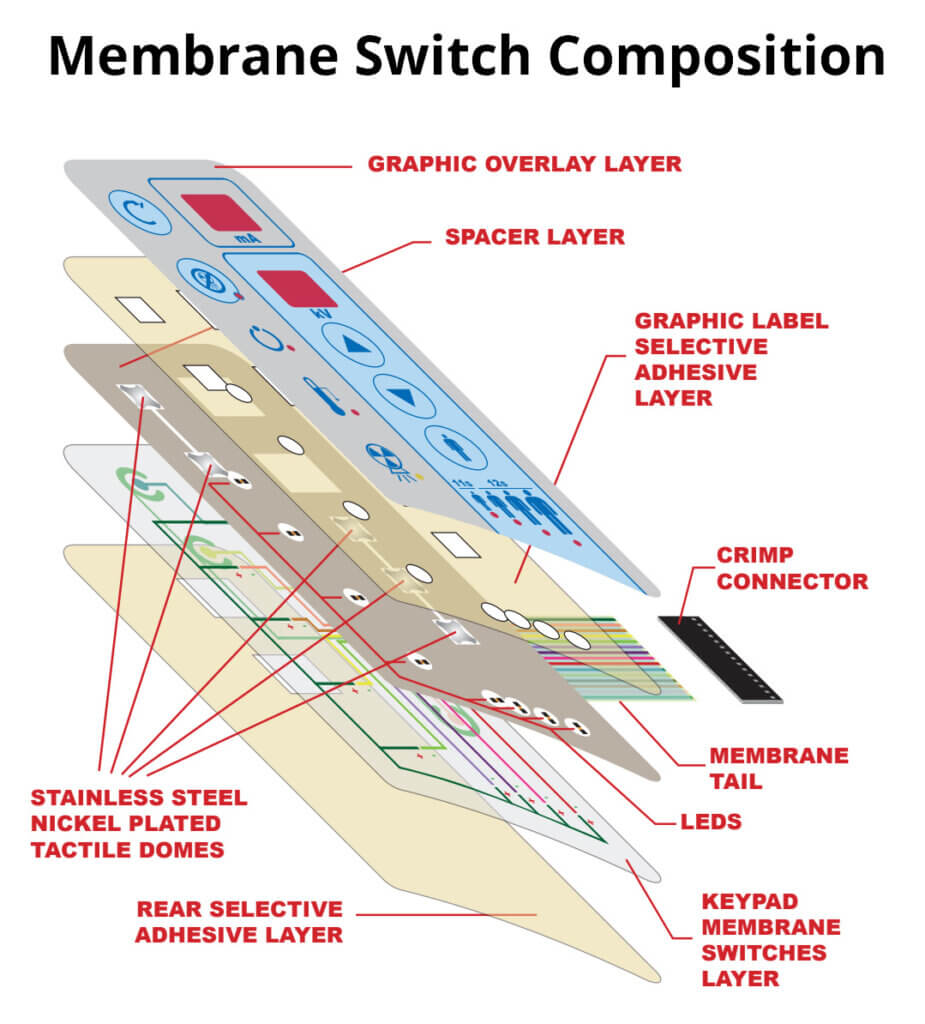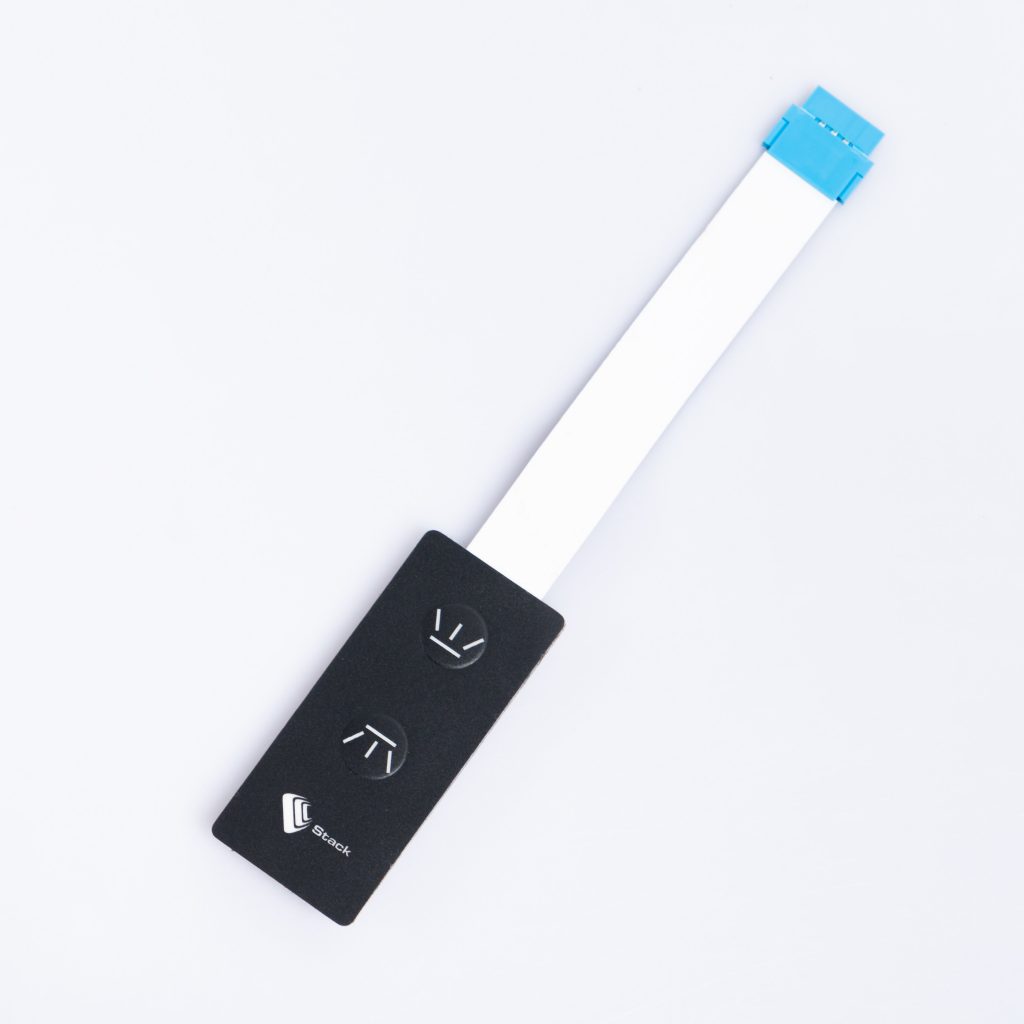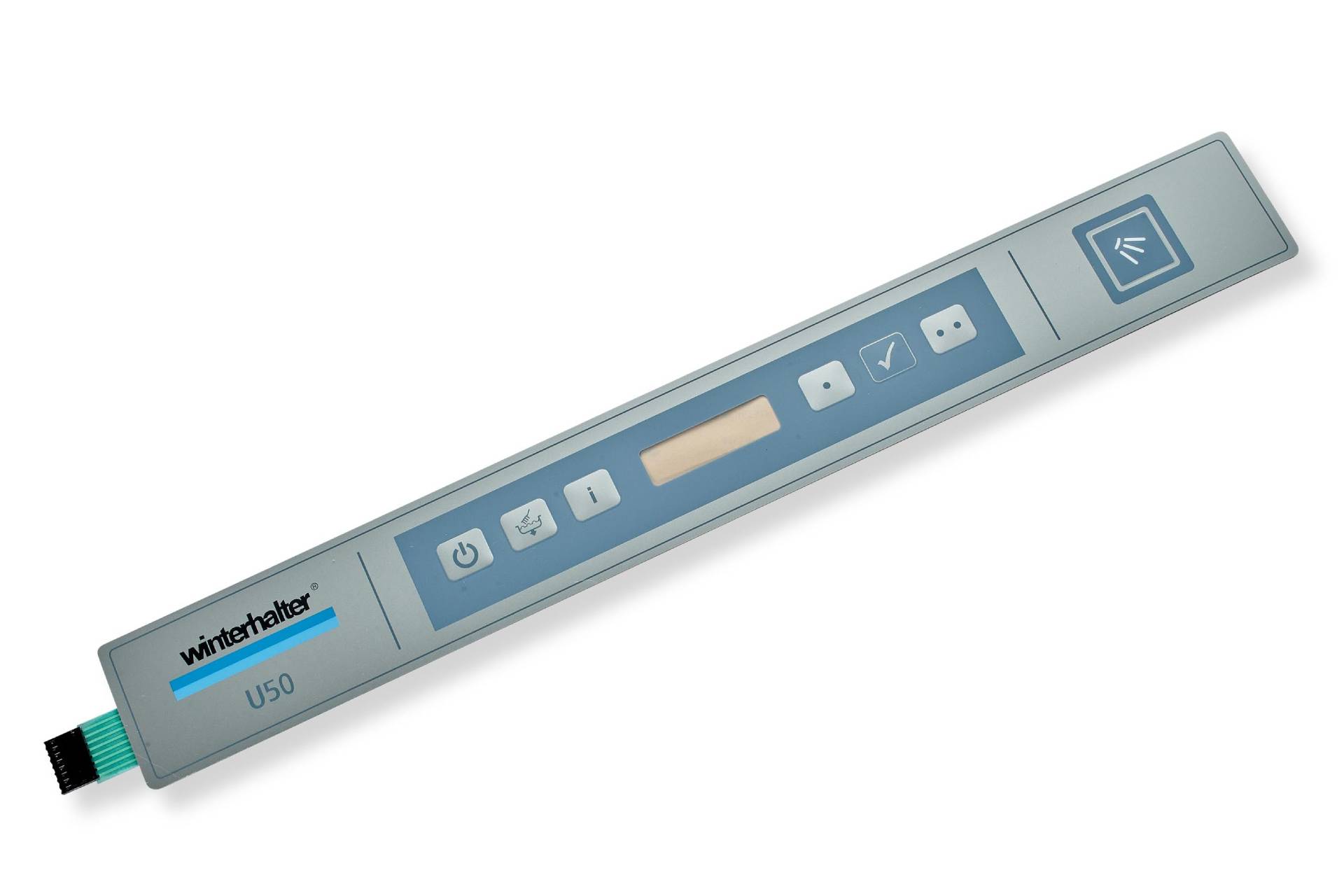Membrane switch safety features for medical environments
The Production Process Behind Membrane Layer Switch Over: What You Required to Know
The manufacturing process behind membrane layer changes combines careful layout, material option, and high quality control. It begins with understanding the intricacies of membrane layer switch design and proceeds with different stages, consisting of material choices and printing strategies. Each phase plays an important role in making sure functionality and longevity. The complexities of layer building and construction and the extensive testing criteria may reveal understandings that are not right away apparent. What exists beyond these fundamental components?
Understanding Membrane Layer Switch Over Design
Membrane layer buttons might show up simple at very first glimpse, their layout involves complex factors to consider that assure functionality and sturdiness. The layout procedure starts with a complete understanding of customer needs, including the interface's intended application and environmental factors. Functional designs is a crucial element, as the format has to facilitate ease of usage while ensuring that responsive comments satisfies individual expectations.Moreover, the layering of elements, such as graphic overlays, sticky layers, and conductive traces, should be exactly engineered. membrane switch. This layered setup not only influences the switch's responsiveness yet additionally influences its durability. Focus is offered to the securing methods utilized to safeguard against dampness and dirt, which might jeopardize performance. Furthermore, design considerations include aesthetics, where color design and aesthetic clarity enhance individual experience. Inevitably, the design of membrane switches over balances capability, user experience, and resilience, guaranteeing that they meet the needs of different applications efficiently
Products Utilized in Membrane Switch Production
When choosing materials for membrane layer switch production, it is vital to consider both performance and durability. The main materials consist of polyester and polycarbonate films, which give versatility and strength. These movies are typically coated with sticky to guarantee appropriate bonding to substrates. Conductive inks, normally composed of silver or carbon, are essential for creating electric connections within the button, enabling reliable operation.Additionally, a protective layer, such as a tough coat, is regularly related to enhance scrape resistance and longevity. The option of backing product, such as acrylic or foam, can considerably influence the button's tactile feel and total individual experience. Numerous ecological factors, including temperature level and moisture, should direct product option to guarantee peak performance in particular applications. Ultimately, the appropriate combination of products adds to the membrane layer button's capability and lifespan, making informed options crucial for manufacturers.
The Printing Process: Creating Graphics and Text
The printing process in membrane switch manufacturing plays a substantial role in producing premium graphics and message. Different visuals style strategies are employed to ensure aesthetic charm and performance, while cautious ink choice techniques are necessary for longevity and performance. Recognizing these components is essential for achieving best results in membrane layer button style.
Graphic Style Techniques
Graphic style techniques play an essential duty in the printing procedure of membrane switches, as they define just how graphics and text will ultimately show up on the last product. Reliable visuals design entails the critical use of shades, designs, and typefaces to improve readability and visual allure. Designers often use vector graphics for scalability, guaranteeing that photos stay sharp at numerous sizes. In addition, interest to comparison and positioning is essential, as it influences customer interaction and visual quality. The consolidation of branding elements, such as logo designs, have to be managed with treatment to maintain brand name honesty. In general, thoughtful visuals design methods add considerably to the capability and attractiveness of membrane buttons, impacting individual experience and item efficiency.
Ink Selection Techniques
Picking the appropriate ink is necessary for attaining the desired visual top quality and durability in membrane button manufacturing. Numerous ink types are used, consisting of solvent-based, water-based, and UV-curable inks. Each kind supplies distinct qualities, such as adhesion, resistance, and flexibility to environmental aspects. Solvent-based inks are usually preferred for their durability and dynamic colors, while water-based inks are much more ecologically pleasant however might have restrictions in bond. UV-curable inks supply quick healing and durable efficiency. In addition, shade matching strategies assure that the chosen inks line up with style specs. Eventually, the selection of ink have to take into consideration variables such as application approach, substratum compatibility, and end-use needs to accomplish superior lead to membrane switch graphics and text.
Layer Building And Construction and Setting Up

Product Selection Process
A cautious choice of products is essential in the manufacturing process of membrane switches, as it straight affects capability and durability. The primary materials utilized include polyester, polycarbonate, and different conductive inks. Polyester is usually preferred for its excellent resistance to chemicals and abrasion, making it suitable for harsh environments. Polycarbonate, on the other hand, offers exceptional clearness and effect resistance, which is helpful for applications calling for presence and effectiveness. Conductive inks, commonly made up of silver or carbon, are essential for developing trusted electric paths. Furthermore, the option of sticky materials impacts the overall honesty of the button - membrane switch. Examining aspects such as environmental exposure, tactile responses, and visual demands guides producers in selecting the very best products for their certain Clicking Here applications
Layer Bond Techniques
Sticking layers in membrane layer switch construction is a vital procedure that ensures functionality and longevity. Numerous bond techniques are used to protect perfect bonding between layers, which commonly include using adhesives, warmth, and pressure. Pressure-sensitive adhesives (PSAs) are commonly made use of for their simplicity of application and immediate bonding capacities. Additionally, thermal bonding strategies can be applied, where heat is utilized to activate glue residential properties, securing a solid description bond. The choice of attachment technique greatly depends upon the products included and the details application demands of the membrane layer switch. Correct alignment and consistent application of adhesives are necessary to protect against problems, safeguarding the switch runs effectively throughout its designated life-span.
High Quality Control Actions
Guaranteeing top quality control during the layer building and setting up of membrane layer switches is necessary for maintaining performance and integrity. This procedure generally entails several vital actions, consisting of extensive examinations at each phase of manufacturing. Suppliers make use of advanced testing techniques, such as peel examinations and attachment assessments, to confirm the stability of layer bonds. In addition, aesthetic inspections are conducted to determine any type of flaws in printing or product inconsistencies. Environmental conditions, such as temperature and humidity, are thoroughly kept an eye on to assure excellent curing and adhesion. Moreover, regular calibration of equipment helps maintain accurate manufacturing standards. By implementing these quality assurance steps, producers can greatly lower the danger of item failing, guaranteeing that the last membrane changes satisfy the needed specs and client expectations.
Testing and Quality Assurance Actions

Developments in Membrane Switch Over Modern Technology
As improvements in innovation continue to evolve, membrane layer switches are gaining from ingenious developments that boost their performance and user experience. One notable technology is the combination of capacitive touch technology, which enables more responsive and instinctive interface. This shift not just improves visual appeals yet likewise reduces mechanical deterioration, extending the life-span of he said the switches.Additionally, developments in visuals overlay materials have actually resulted in boosted sturdiness and resistance to ecological factors such as wetness and UV light. These materials now supply improved quality and brightness, additional elevating the visual appeal.Furthermore, the unification of smart modern technology is transforming membrane switches over into interactive control panels, making it possible for connectivity with IoT gadgets. This connection fosters a seamless customer experience, paving the method for applications in numerous industries, from health care to customer electronic devices. Collectively, these advancements placement membrane changes as essential components in contemporary gadget layout.
Frequently Asked Inquiries
How much time Does the Membrane Layer Switch Over Manufacturing Refine Take?
The duration of the membrane switch manufacturing process can vary substantially. Factors such as complexity, materials utilized, and manufacturing quantity impact timelines, with typical production ranging from a few days to several weeks for completion.
What Are the Typical Applications for Membrane Layer Buttons?
Membrane layer buttons are generally made use of in numerous sectors, consisting of automotive controls, household appliances, medical devices, and consumer electronics (membrane switch). Their flexibility and sturdiness make them suitable for applications calling for straightforward user interfaces and trusted efficiency in varied atmospheres
Can Membrane Changes Be Personalized for Particular Needs?

What Is the Lifespan of a Normal Membrane Layer Switch?
The life expectancy of a normal membrane layer switch varies, however normally, it varies from 1 to 5 million cycles. Variables such as usage, environment, and material high quality substantially affect resilience and general performance gradually.

Are Membrane Layer Switches Over Eco-friendly?
The ecological kindness of membrane layer changes varies. Some materials used may not be recyclable, while others can be eco-friendly. The overall impact relies on making techniques and products, necessitating careful factor to consider throughout choice and disposal. The manufacturing process behind membrane layer switches over combines cautious design, material option, and high quality control. It begins with understanding the details of membrane layer switch design and proceeds with different stages, consisting of material choices and printing strategies. When choosing materials for membrane layer switch manufacturing, it is crucial to consider both performance and durability. A mindful choice of materials is necessary in the manufacturing procedure of membrane layer switches, as it straight influences capability and toughness. The choice of attachment technique largely depends on the products involved and the certain application requirements of the membrane layer switch.